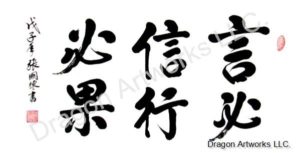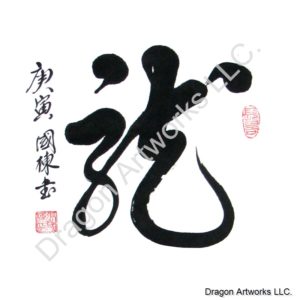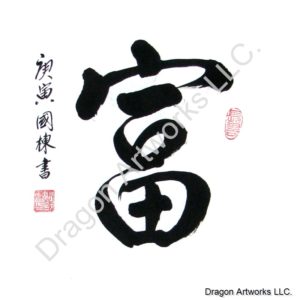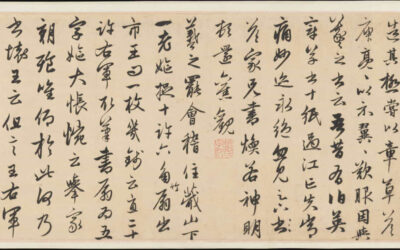Calligraphy Paintings
Shop for Chinese Calligraphy Masterpieces
The Master Calligraphers website offers exquisite Chinese calligraphy created by talented calligraphers from mainland China. We are passionate about bringing you the beauty and artistry of this ancient practice that has been refined over centuries.
Our collection features various calligraphy styles, and each piece is a unique and stunning work of art. Our calligraphers use only the finest quality materials and techniques, ensuring that each stroke is precise and elegant.
Whether you are a collector, an enthusiast, or simply looking for a unique and meaningful gift, we have something for you. Our calligraphy pieces make perfect additions to any home or office, adding a touch of elegance and sophistication to any space.
Table of Contents
- History of Chinese Calligraphy
- Quotes by Artists and Philosophers
- The Main Calligraphy Styles
- Importance of Chinese Calligraphy
- Chinese Calligraphy Tools and Materials
- Techniques Used in Chinese Calligraphy
- Famous Chinese Calligraphers
- Influence of Calligraphy on Chinese Culture
- Appreciating Chinese Calligraphy
- Tips for Beginners in Chinese Calligraphy
- Modern Applications of Chinese Calligraphy
- The Future of Chinese Calligraphy
Chinese Calligraphy Scrolls
Buy Chinese Calligraphy Scrolls Online
A Brief History of Chinese Calligraphy
Chinese calligraphy, also known as “Shufa,” has a long and rich history that spans over 4,000 years. The History of Chinese Calligraphy can be traced back to the Shang Dynasty (1600-1046 BC), where symbols were etched onto turtle shells and animal bones for divination purposes.
As the Chinese script evolved, different styles of calligraphy emerged. One of the most significant developments was the standardization of the script during the Qin Dynasty (221-206 BC), which led to the creation of the small seal script.
During the Han Dynasty (206 BC-220 AD), the clerical script was developed, a more formal and structured form of calligraphy. The regular script, also known as the Kaishu script, was created during the Jin Dynasty (265-420 AD) and became the standard form of calligraphy in China.
Throughout Chinese history, calligraphy has been used for communication, self-expression, and as an art form. The different styles of calligraphy, as well as the famous calligraphers who practiced the art form, have influenced literature, art, and philosophy.
Today, Chinese calligraphy continues to be an important part of Chinese culture and history, and its modern applications showcase the versatility and beauty of the art.
Visit our Chinese Calligraphy Blog for more detailed information.
Quotes by Famous Artists and Philosophers
The Five Major Styles of Chinese Calligraphy
Chinese calligraphy is a highly respected art form that has been practiced for over two thousand years. It is a visual representation of Chinese culture and history, and each stroke of the brush holds deep meaning and symbolism. The Five Major Styles of Chinese Calligraphy, Seal Script, Clerical Script, Regular Script, Running Script, and Cursive Script, each have their own unique characteristics and history. From the precise and formal Seal Script, to the fluid and expressive Cursive Script, each style is a reflection of the artistic expression and cultural values of the time period in which it developed. The study and practice of Chinese calligraphy is not only a means of artistic expression but is also considered a form of meditation and a way to cultivate inner peace and tranquility.
- Seal Script (篆书, Zhuànshū): This style of calligraphy originated in the Zhou dynasty and is characterized by its square, compact and uniform characters. It was primarily used for inscriptions on seals and is considered the earliest form of Chinese calligraphy.
- Clerical Script (隶书, Lìshū): This style of calligraphy developed during the Han dynasty and was used for official documents. The characters are more rounded and flowing than in Seal Script, and strokes are longer and more curved.
- Regular Script (楷书, Kǎishū): This style of calligraphy developed during the Han dynasty and is the most commonly used style of calligraphy today. It is characterized by its clear, simple and standardized characters, with strokes that are even and balanced.
- Running Script (行书, Xíngshū): This style of calligraphy developed during the Han dynasty and is characterized by its cursive and flowing strokes. It is often used for informal writing and is considered one of the most difficult styles of calligraphy to master.
- Cursive Script (草书, Cǎoshū): This style of calligraphy is the most fluid and free-flowing of all the styles. It is characterized by its rapid and abbreviated strokes, which often connect to form a continuous line. It is primarily used for personal correspondence and poetry.
The Importance of Calligraphy in Chinese Culture
Chinese calligraphy has been essential in Chinese culture for thousands of years. It is a form of art and a way of communication and self-expression. It is deeply rooted in tradition and is seen as a way of preserving culture. It has been passed down from generation to generation and is still widely practiced today. In fact, calligraphy is often taught in schools and is considered an important part of the education system.
Calligraphy has also had a significant influence on other aspects of Chinese culture. It has influenced literature, art, and philosophy and is an essential part of the history of China.
The different styles and techniques of Chinese calligraphy and the famous artists who have practiced the art form have contributed to the development of culture. Calligraphy has also been used in official documents, such as royal decrees and government proclamations.
In addition to its historical and cultural significance, Chinese calligraphy has practical uses. It is used in graphic design, advertising, and branding and is also used in tattoo art.
Overall, The Importance of Calligraphy in Chinese Culture has made it an integral part of the culture and history of China. It is an art form that embodies the beauty and richness of tradition and has significantly impacted culture and society.
Tools and Materials Used in Chinese Calligraphy
Chinese calligraphy requires specific tools and materials to create intricate characters. The basic tools used include:
Brush: The brush is the most important tool in Chinese calligraphy. It is made of animal hair, such as goat, wolf, or rabbit, and comes in different sizes and shapes. The brush is used to create the strokes and lines that make up the characters.
Ink: Ink is made from charcoal or lampblack and is mixed with water to create the perfect consistency for writing. High-quality ink is essential for creating smooth, even lines.
Paper: Specialized paper is used in Chinese calligraphy. It is thin and absorbent and comes in different textures and colors.
Inkstone: An inkstone is used to grind the inkstick into ink. It is usually made of stone and has a flat surface.
Techniques Used in Chinese Calligraphy
Chinese calligraphy requires a lot of practice and skill to master. Some of the Techniques of Chinese Calligraphy include:
Pressure control: Controlling the pressure of the brush on the paper is essential for creating different stroke widths and textures.
Strokes: Chinese calligraphy is made up of different strokes, including horizontal, vertical, and diagonal lines, as well as dots and hooks.
Composition: The composition of the characters is important in Chinese calligraphy. The characters should be balanced and aesthetically pleasing to the eye.
Movement: The brush should move with fluidity and grace to create the desired effect.
Famous Chinese Calligraphers
Chinese calligraphy has a long tradition of famous artists who have left their mark on the art form. Some of the most famous calligraphers in the history of China include:
Wang Xizhi: Considered the “sage of calligraphy,” Wang Xizhi lived during the Jin Dynasty (265-420 AD) and is credited with creating the Kaishu script.
Su Shi: Su Shi was a famous writer and calligrapher who lived during the Song Dynasty (960-1279 AD). His calligraphy is known for its bold, expressive strokes.
Dong Qichang: Dong Qichang was a Ming Dynasty (1368-1644 AD) calligrapher and artist. He is known for his style of calligraphy that combines elements from different scripts.
Zhao Mengfu: Zhao Mengfu was a Yuan Dynasty (1271-1368 AD) calligrapher and artist. His calligraphy is known for its simplicity and elegance.
Influence of Chinese Calligraphy on Chinese Culture
Chinese calligraphy has had a significant impact on Chinese culture. It is a form of art and a way of communication and self-expression and has influenced literature, art, and philosophy, and is an essential part of Chinese history.
Chinese calligraphy is also a way of preserving culture and tradition. It has been passed down from generation to generation and is still widely practiced today.
Appreciating Chinese Calligraphy
Appreciating Chinese calligraphy requires understanding the different styles and techniques used in the art form. It is important to study the characters and strokes and to enjoy the balance and composition of the writing.
One way to appreciate Chinese calligraphy is to visit museums and exhibitions that showcase the art form. Reading books and articles about it can also deepen your understanding and appreciation of the art.
Tips for Beginners in Chinese Calligraphy
If you are interested in Learning Chinese Calligraphy, here are some tips for beginners:
Invest in high-quality materials, such as a good brush, ink, and paper.
Practice basic strokes and characters to develop your skills.
Study the different styles of calligraphy to find the one that resonates with you.
Find a teacher or mentor who can guide you in your practice.
Practice regularly and be patient with yourself.
Modern Applications of Chinese Calligraphy
Chinese calligraphy has modern applications beyond the traditional form of writing. It is used in graphic design, advertising, and branding, and it is also used in tattoo art. Some artists combine it with other art forms, such as painting and sculpture, to create unique works of art.
The Future of Chinese Calligraphy
The future of Chinese calligraphy is bright, with a growing interest in the art form in China and worldwide. With the development of technology, new tools, and materials are being created to make the art form more accessible to people. As it continues to evolve, it will remain an essential part of the culture and history of China.
Free Shipping
Free shipping via Priority Mail within the USA on all orders.
Secure Payment
We offer s safe shopping experience, guaranteed.
100% Satisfaction
*30 day money back guarantee on all orders.
Fantastic Support
Contact us via phone or email, we're here to help.
Deal Of The Week
God Rewards Diligence
$499.99 $399.99
This Chinese calligraphy painting states an obvious, though often under-appreciated fact, God rewards diligence.
SALE
Day(s)
:
Hour(s)
:
Minute(s)
:
Second(s)

Trending Chinese Calligraphy Paintings
Every Painting is Hand Written by Master Calligraphers
-

Big Fu Chinese Calligraphy Painting
$999.99 Add to cart -

Blessed and Long Life Calligraphy Painting
$499.99 Add to cart -

Buddha Heart Chinese Calligraphy Painting
$999.99 Add to cart -

Chinese Calligraphy Poem Liu Pan Mountain by Mao Ze Dong
$1,499.99 Add to cart -

Chinese Character Buddha Calligraphy Painting
$499.99 Add to cart -

Chinese Character Dragon Calligraphy Painting
$199.99 Add to cart -

Chinese Character for Good Fortune Calligraphy Painting
$199.99 Add to cart -

Chinese Character for Wealth or Abundance Calligraphy Painting
$199.99 Add to cart -

Chinese Character Joy Calligraphy Painting
$199.99 Add to cart -

Chinese Character Tiger Calligraphy Painting
$399.99 Add to cart -

Chinese Symbol for Peace Calligraphy Painting
$199.99 Add to cart -

Custom Chinese Calligraphy Scrolls for Sale
$49.99 – $199.99 Select options
Free Shipping on Quality Chinese Calligraphy Art Paintings and Wall Scrolls
We take great pride in the quality of our products and strive to provide our customers with the best possible shopping experience. From browsing our collection to placing an order, we are committed to making your journey with us as seamless and enjoyable as possible.
We offer free shipping on all orders and a satisfaction guarantee, so you can shop with confidence. Our customer service team is always here to help answer any questions you may have, and we are dedicated to providing the highest level of service to each and every customer.
Thank you for choosing our website as your destination for the finest Chinese calligraphy. We look forward to sharing the beauty and artistry of this timeless tradition with you.
Latest News
Chinese Calligraphy
How to Buy Affordable Chinese Art Online
Calligraphy has been practiced in China for thousands of years. However, Wang Xizhi is considered to be the greatest calligrapher of all.
Wang Xizhi: The Master Calligrapher of Chinese History
Calligraphy has been practiced in China for thousands of years. However, Wang Xizhi is considered to be the greatest calligrapher of all.
The History of Chinese Calligraphy
One of the world’s most celebrated and revered art forms, the storied history of Chinese calligraphy spans thousands of years.
Chinese Calligraphy has a Rich Tradition
Chinese calligraphy is a beautiful, intricate art form with rich history and tradition. From the earliest symbols etched into turtle shells to the standardized Kaishu script, it has played an essential role in Chinese culture.
The different styles and techniques of Chinese calligraphy and the famous artists who have practiced the art form have influenced literature, art, and philosophy. Today, it continues to be an important part of Chinese culture and history, and its modern applications showcase the versatility and beauty of the art.
Whether you are a beginner or a seasoned practitioner, there is much to appreciate and learn from current Chinese calligraphy masters and the works created by famous artists for thousands of years. By investing in high-quality materials, studying the different styles, and practicing regularly, anyone can develop the skills and appreciation for this ancient and timeless art form.
@ dragonartworks
Follow us on Instagram, Twitter, and Facebook






















